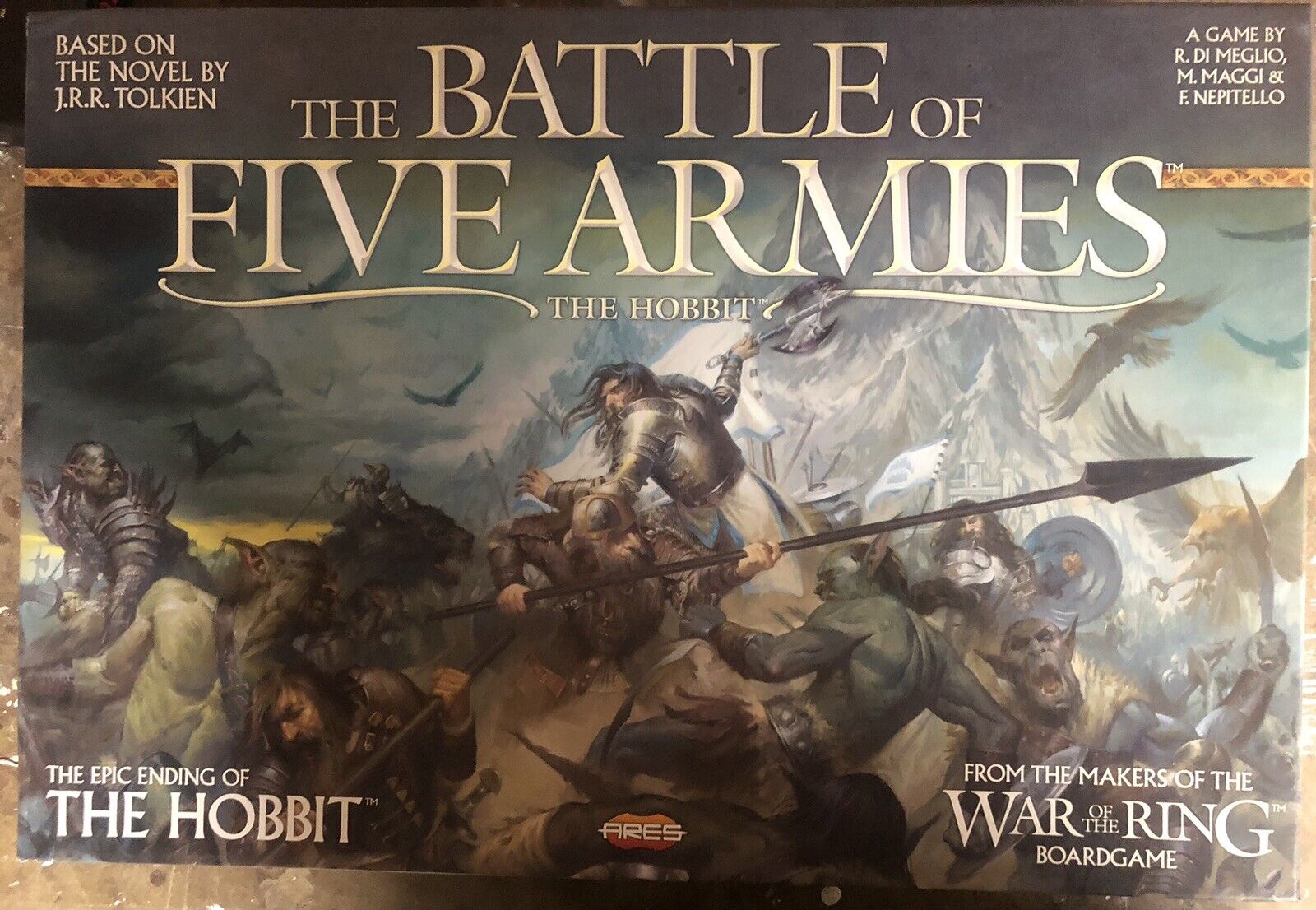Battle of the Five Armies
Battle of the Five Armies
“Battle of the Five Armies” is a board game produced by Ares Games, based on the rules for War of the Ring, but with modifications to reflect the events of J.R.R. Tolkien’s novel “The Hobbit”. The game was first released in 1975 by Lore/JMJ Enterprises and later re-released in a revised edition by Ares Games in 2023. The game is designed for two players, with one player controlling the armies of the Shadow (led by Bolg, son of Azog, the King of the Goblins of Mount Gundabad) and the other player commanding the forces of Men, Dwarves, and Elves, led by Gandalf.
Why is Battle of the Five Armies Popular?
The game is popular due to its connection to the world of J.R.R. Tolkien and its adaptation of the climax of “The Hobbit”. It allows fans of the series to re-create the epic conclusion of the story in a tactical board game format. The game has received positive reviews on BoardGameGeek and has been praised for its replayability and immersive gameplay.
Game Components of Battle of the Five Armies
How To Setup Battle of the Five Armies
To set up the game, players begin with a static board setup. Each player chooses their side: the Free Peoples or the Shadow Armies. The game board includes a 15-spot fate track, which acts as the game’s timer. Players collect their action dice and draw two cards each: one from their story deck and one from the shared event deck.
Gameplay Mechanics and Game Objective
Mechanics:
Game Objective:
Player Experience
Playing **Battle of the Five Armies** involves a mix of strategic planning and tactical execution. The game is divided into six phases per round, including recovery, general activation, shadow leadership, and action rounds. Players must carefully manage their action dice, event cards, and leadership tokens to achieve their objectives. The game’s balance shifts as the fate track progresses, introducing powerful characters and special events.
Pros
Cons
Personal Thoughts on Battle of the Five Armies
**Battle of the Five Armies** is ideal for fans of strategic war games and those who enjoy the lore of **The Hobbit**. While it offers a rich and immersive experience, it may not be the best fit for players seeking highly varied gameplay or those who prefer more symmetric game designs. The game’s complexity and the need for careful resource management make it suitable for experienced board game enthusiasts. Despite some criticisms about repetitive gameplay, it remains a compelling choice for those who enjoy the blend of strategy and thematic depth found in games like **War of the Ring**.
We are supported by our audience. When you purchase through links on our site, we may earn an affiliate commission, at no extra cost for you. Learn more.

